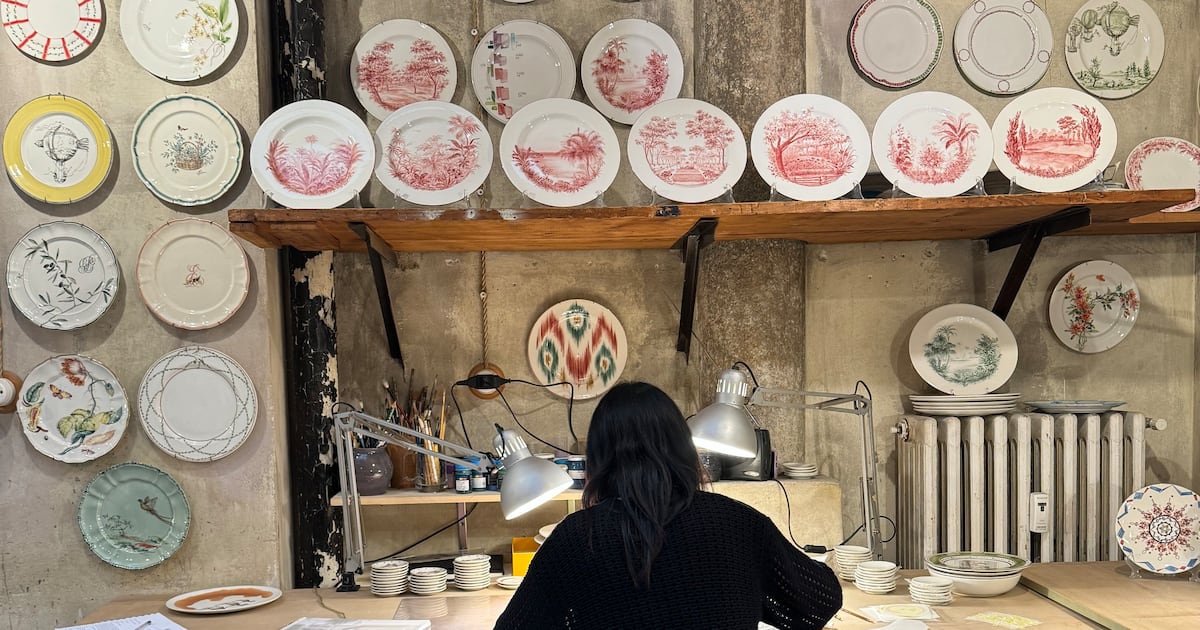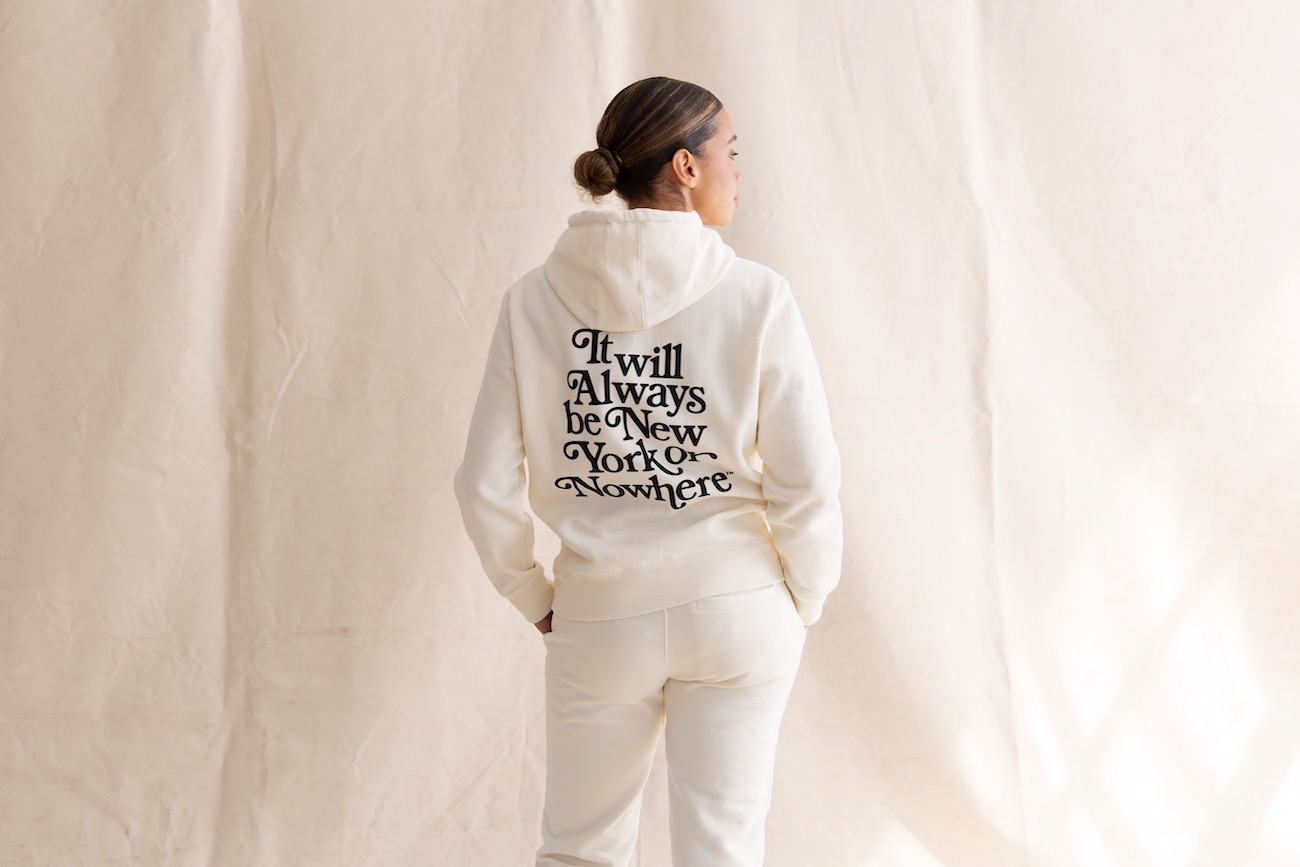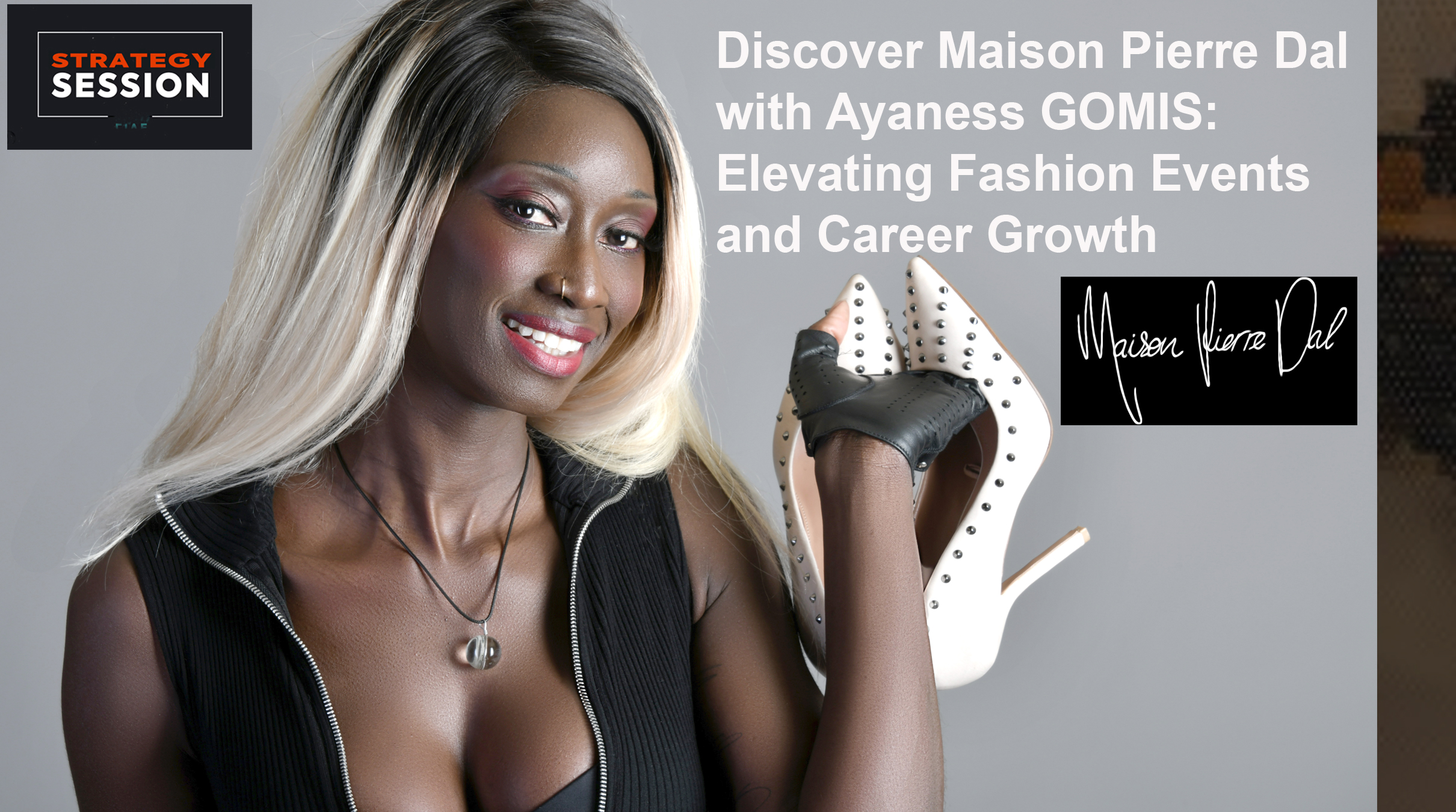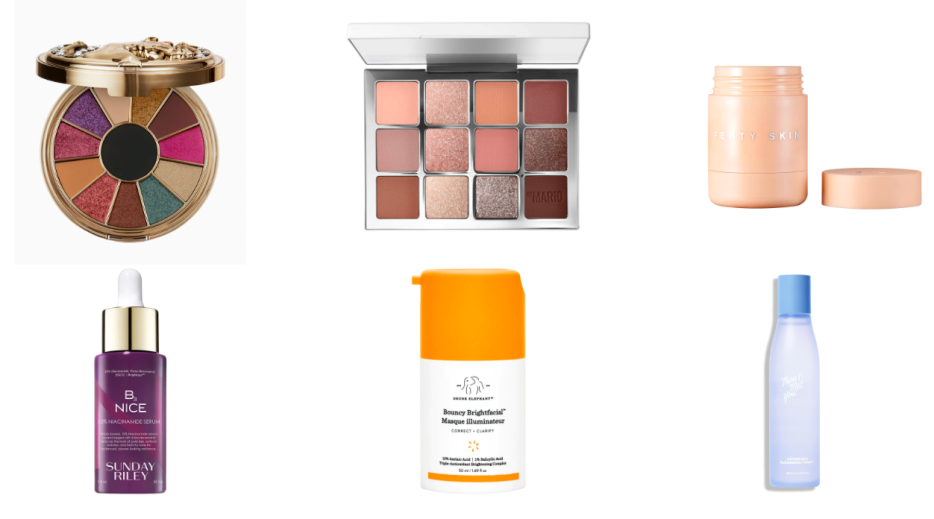Fashion Goes Big at Salone, But Design Still Rules
MILAN — Salone del Mobile, the annual furniture fair which anchors Milan Design Week, is to the furniture, lighting and interiors industries what Paris Fashion Week is to the world of fashion and luxury: a showcase for the latest trends and products and ideas shaping the future of design, as well as a place for networking, deal-making, discovering new suppliers and connecting with potential clients.
Design weeks are popping up around the world, from Copenhagen (Three Days of Design) to Miami (Design Miami) to Dubai (Dubai Design Week), a sign of the growing interest in design around the world, but none of these comes close to Salone. This year, more than 300,000 people were expected in Milan for Design Week, including a growing cohort of ultra high-net worth consumers.
For someone like me, who is more au fait with fashion weeks, Salone also feels more convivial and relaxed, with better weather and fewer distractions. There are no street style peacocks hustling for attention or celebrity logjams created by K-pop and Hollywood stars. Plus, the exclusive VIP press previews and industry events that dominate the early part of the week eventually give way to an open-door policy where anyone can come in to appreciate the creativity that animates hundreds of design companies, architects and designers. Overall, everything is more agreeable and chill.
But this year, many of the design creatives, executives and investors I spoke to were grumbling about two factors that threatened to dampen the week’s festivities; first, the “scandal” that the opening dates of this year’s Venice Biennale overlap with Design Week, meaning many planned to leave Milan early to catch previews in Venice. And second, the growing number of fashion and automotive brands staging big events with gargantuan budgets, “fuori Salone,” on the periphery of the main trade event. Even Technogym, the Italian company known for its gym equipment, got in on the action, setting up a green terrazzo at the top of via Solferino.
Most of the design insiders I spoke to seem resigned to the fact that these companies are encroaching on their beloved event. They also know they remain firmly in the driver’s seat when it comes to the real business of design. For most fashion companies, doing an event during Salone is just another chance to create content, send out another press release and get in front of the crowds. (For more on how leading fashion brands like Hermès, Gucci, Bottega Veneta, Loewe and Prada staged activations at Salone, read Dan Thawley’s report: Fashion and Design Collide at Salone del Mobile. Thankfully, he pounded the pavement to see as much as possible in the crammed schedule.)
I took things at a more leisurely pace, but when I encountered some of fashion’s Salone marketing moments first-hand — revealing “a collaboration” or “capsule collection” or celebrating a “landmark anniversary” by asking famous designers to create one-off pieces — more often than not, they felt empty; they weren’t really about driving design or craft or innovation in a meaningful way and seemed gimmicky amongst the incredible craft and creativity being showcased by the very best designers in the world. In my view, it is dilutive for a fashion brand to do something sub-scale and inauthentic just to join the Salone circus.
But there is real business to be done too and the market landscape is changing fast. The design industry remains very fragmented — no single player accounts for more than five percent of the total market — and the businesses are smaller than the big luxury houses that dominate the fashion industry, making the sector ripe for consolidation.
This is not lost on Daniel Lalonde, the LVMH-trained executive who is now CEO of Design Holding, which hosted its annual dinner to kick off Salone on Sunday night at MUDEC, the Museo Delle Culture Milano, where guests included star designers and architects Philippe Stark and Antonio Citterio, Fendi CEO Serge Brunschwig and Amy Astley, global editorial director and editor-in-chief of Architectural Digest.
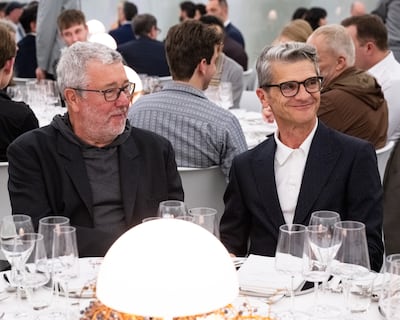
During dinner, Daniel and I caught up on his strategy for Design Holding, the largest player in the luxury end of the home and design market. Backed by Carlyle Group and InvestIndustrial, the holding group now owns the high-end furniture company B&B Italia and the lighting company Flos, amongst others, and has a 80/20 joint-venture partnership with Fendi for its Fendi Casa collection. In 2022, Design Holding acquired Denmark-based Designers Company, which owns Menu and By Lassen. (The 2 Danish brands have since been united under the brand name Audo Copenhagen.)
But even then, with 9 brands which generated €867 million in revenue in 2022, Design Holding is still a tiny fraction of the size of LVMH, which turned over €79.2 billion last year.
This seems like a clear opportunity for further consolidation in the sector and one day, a megadeal that would bring Design Holding into the fold of one of the large luxury groups whose position in the space remains limited.
For most fashion brands, their homeware and design businesses — even for the so-called megabrands — is limited to a few furniture pieces or some bed linens or tableware, doing no more than tens of millions of euros a year in revenue.
One notable exception to this rule is Hermès, which has the most sizeable home business of the fashion and luxury companies, said to generate around half a billion euros in annual revenue. Each year, the brand stages a stunning expression of its creativity in design. (Interesting sidenote: Thomas Chauvet of Citi said in an analyst note this week that Hermès could surpass Louis Vuitton as the luxury industry’s biggest brand by revenue).
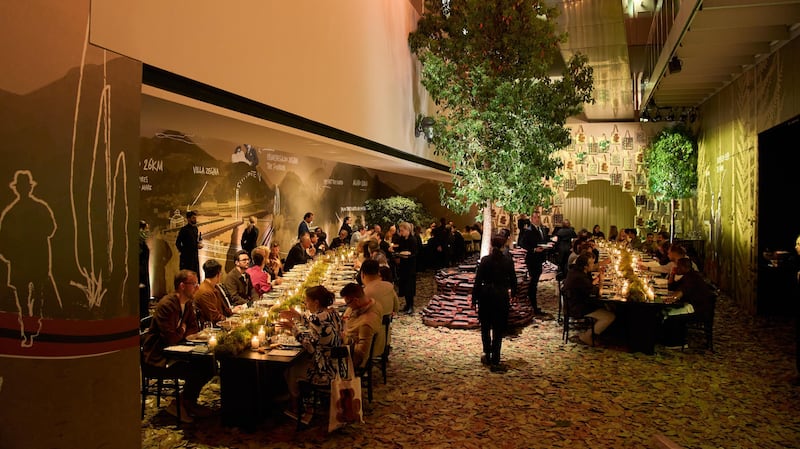
For Zegna, another one of the industry’s top performing brands, it’s the growing number of ultra high net worth customers that make Milan Design Week an interesting place to have a presence. Zegna doesn’t do a homeware or furniture collection and didn’t do a public brand activation, but it took the opportunity to stage no less than four dinners at its Milan headquarters, themed around the launch of a new book on Oasi Zegna in Piedmont, where the firm produces fabrics for many fashion and furniture companies. About half the people at the dinner I attended were top customers in town for Design Week, all dressed in Zegna’s “quiet luxury” staples, especially the Triple X sneakers which cost more than $1000 a pair.
But my highlights of the week had nothing to do with fashion. Tucked away in the backstreets around via Torino, is Laboratorio Parravicini. I couldn’t find much info about the company. According to Google, it’s a “pottery shop” but this does not adequately describe its beautiful hand-painted porcelain. When I asked to speak to a PR he seemed more excited to welcome me into the space rather than share a press release or email address. I gave him my address and we went along on our merry way. (If you read this, please email me, I have ideas for you!)

Design firm DimoreStudio (and its line of furniture, rugs and lighting, DimoreMilano), founded by the multitasking duo Britt Moran and Emilano Salci, had no less than three multi-sensory installations around town, including their incredible studio space near Milano Centrale. At a preview on Monday, Britt was exhilarated but exhausted from all the hard work in pulling it all together. But boy was it worth it.
It’s hard to describe what it feels like to walk into one of their immersive experiences. Sometimes there is stillness. Sometimes there’s a wind tunnel or a signature scent that takes over the whole space. But there are always beautiful ideas, designs and products. My words and pictures here won’t do it justice, but suffice to say it’s this kind of design and innovation that makes Milan Design Week so inspiring and worthwhile.
You’ll just have to visit next year for yourself.
This Weekend on The BoF Podcast
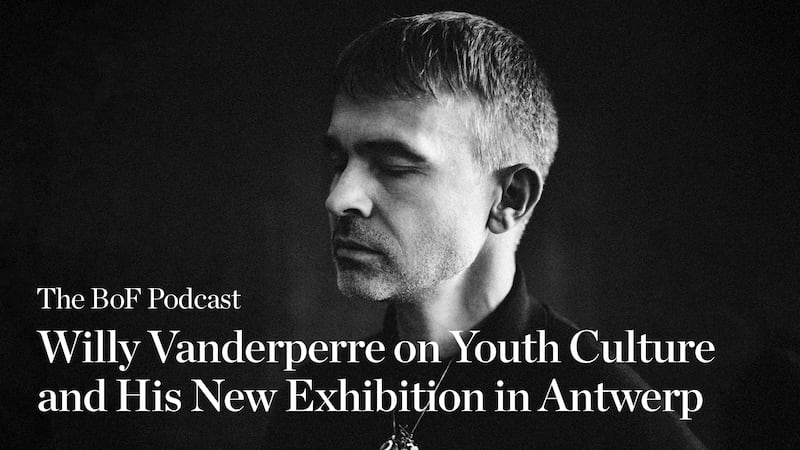 Opens in new window
Opens in new windowThe author has shared a Podcast.You will need to accept and consent to the use of cookies and similar technologies by our third-party partners (including: YouTube, Instagram or Twitter), in order to view embedded content in this article and others you may visit in future.
For more than 30 years, Willy Vanderperre has been fascinated with youth. As BoF’s editor-at-large Tim Blanks writes in his feature on Willy this week, the condition of “youth” is determined less by age than mindset.
Ahead of his 2024 exhibition “Willy Vanderperre Prints, Films, a Rave and More…” at the MoMu – Fashion Museum Antwerp, Willy sat down with Tim to discuss creative collaborations with Raf Simons and Olivier Rizzo, his approach to image-making and much more.
Imran Amed, Founder, CEO and Editor-in-Chief, The Business of Fashion
Plus, here are my other top picks from our analysis on fashion, luxury and beauty:
1. Is the FTC Really Going to Stop Coach and Michael Kors From Merging? Blocking the deal would set a new precedent for fashion M&A in the US and leave Capri Holdings in a precarious position as it attempts to turn around its Michael Kors brand.
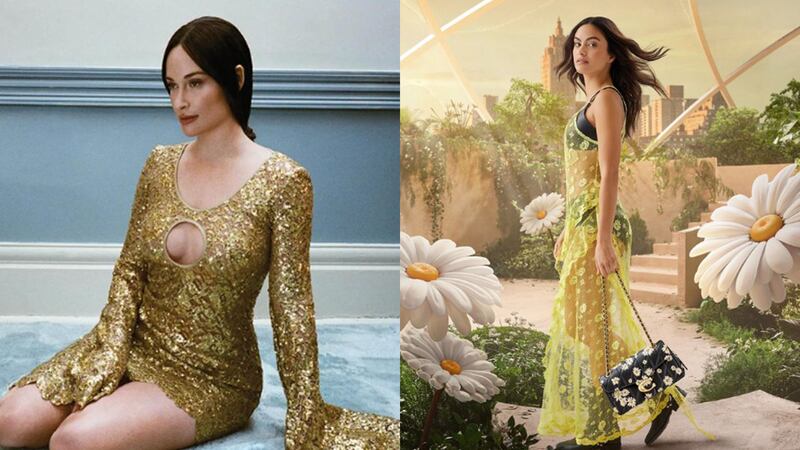 Opens in new window
Opens in new window2. Fashion’s Golden Opportunity With Older Shoppers. Often left out of the picture in a youth-obsessed industry, Gen-X and Baby Boomer shoppers are an increasingly attractive prospect for brands looking to court stable, high-spending consumers.
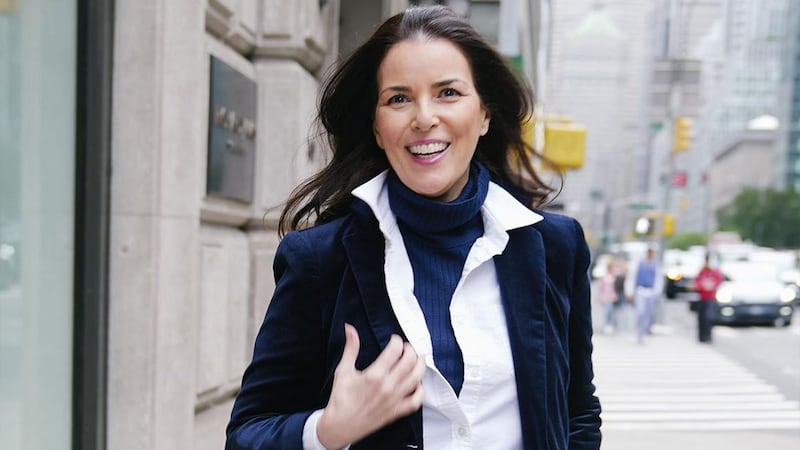
2. Revolve Invented Influencer Marketing as We Know It. Now It’s Pulling Back. The brand’s smaller Coachella presence points to a new direction for the retailer, which invented many of the tricks of the influencer trade.
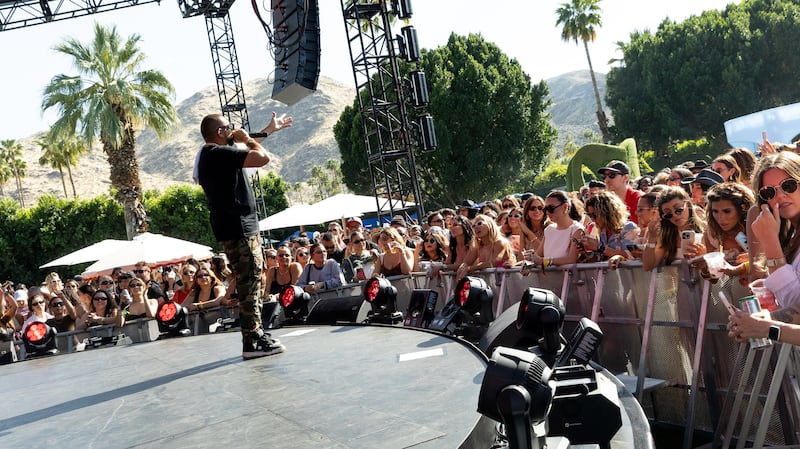 Opens in new window
Opens in new window3. LVMH Sales Grow 3% as Luxury Boom Stalls. The result confirms sector-wide fears that luxury demand would continue to slow.
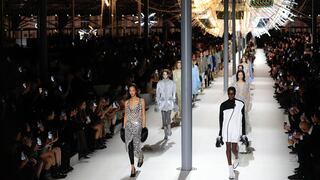 Opens in new window
Opens in new window5. How Rent the Runway Came Back From the Brink. The rental platform saw its stock soar last week after predicting it would hit a key profitability metric this year. A new marketing push and more robust inventory are the key to unlocking elusive growth, CEO Jenn Hyman tells BoF.
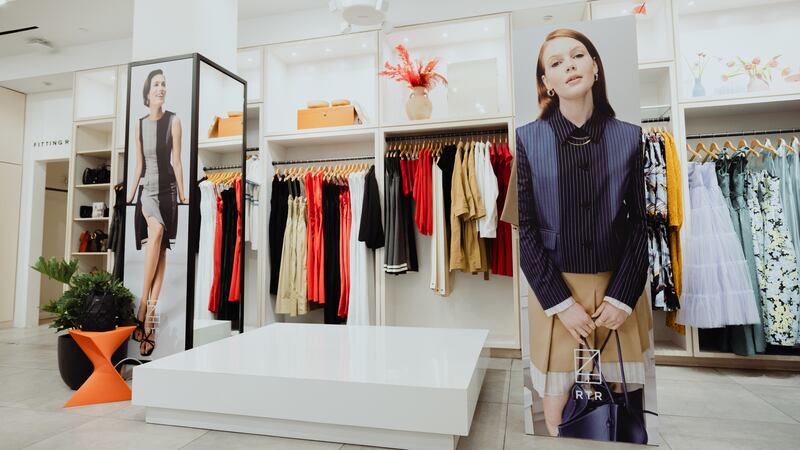 Opens in new window
Opens in new windowTo receive this email in your inbox each Saturday, sign up to The Daily Digest newsletter for agenda-setting intelligence, analysis and advice that you won’t find anywhere else.

